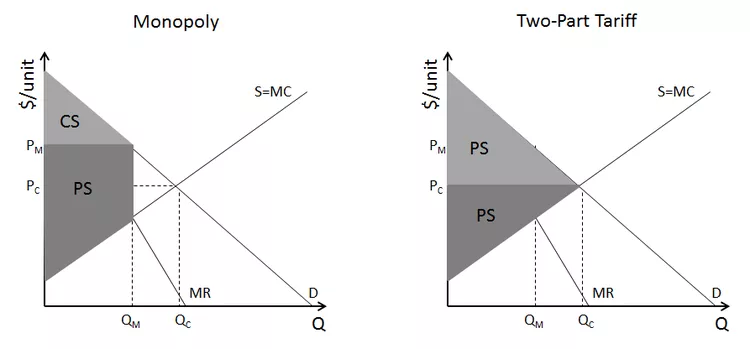How to price discriminate when the two types are not differentiable?
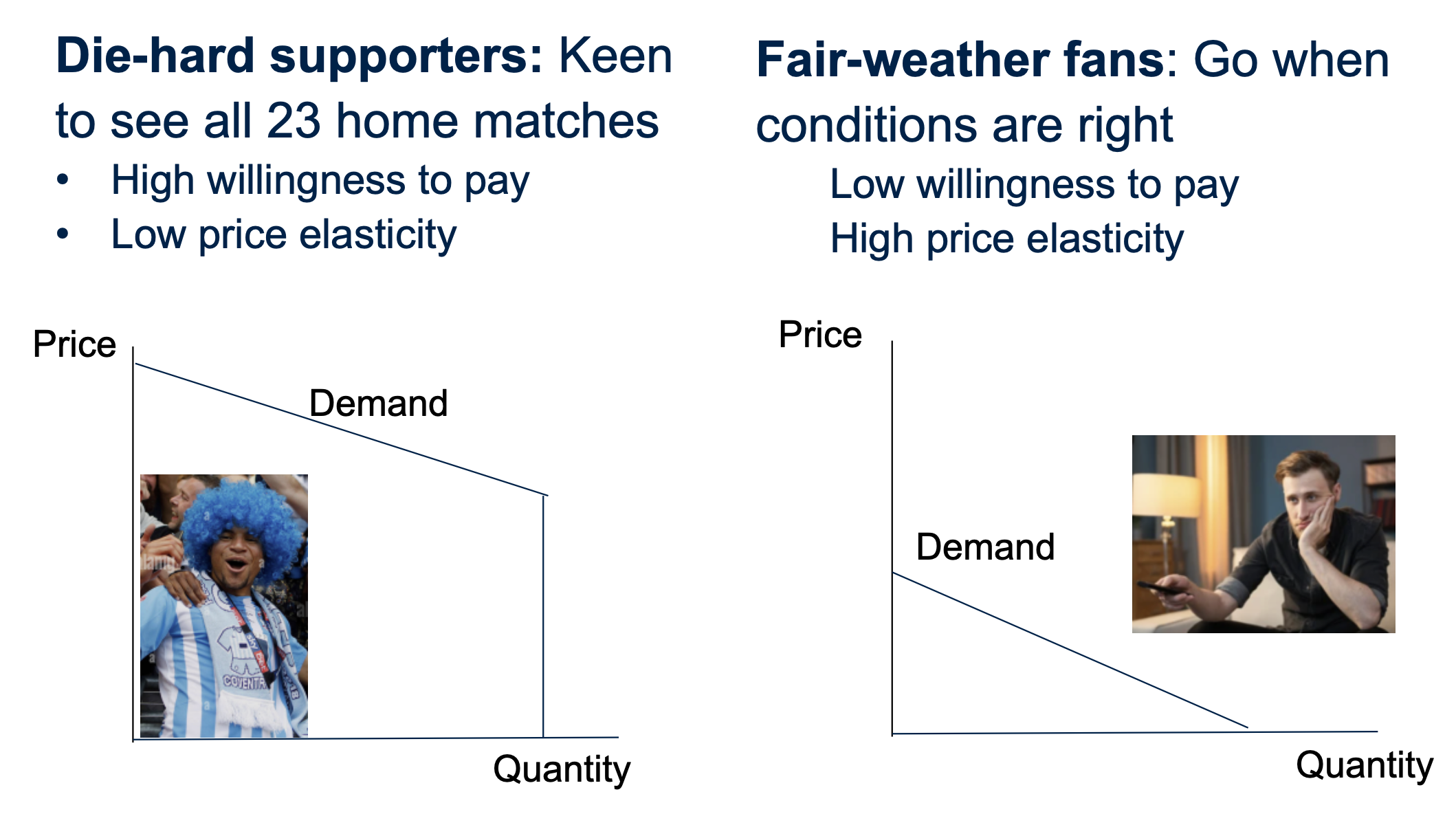
Starting Point
Questions to Think about
- If they could discriminate, should Coventry FC charge die-hard fans more or less than fair-weather fans?
- Die-hard fans have less elastic demand
- Setting a higher price may encourage fair-weather fans to stay away
- Can they discriminate?
Die Hard Fans: the conventional pricing MC=0, set MR=MC.
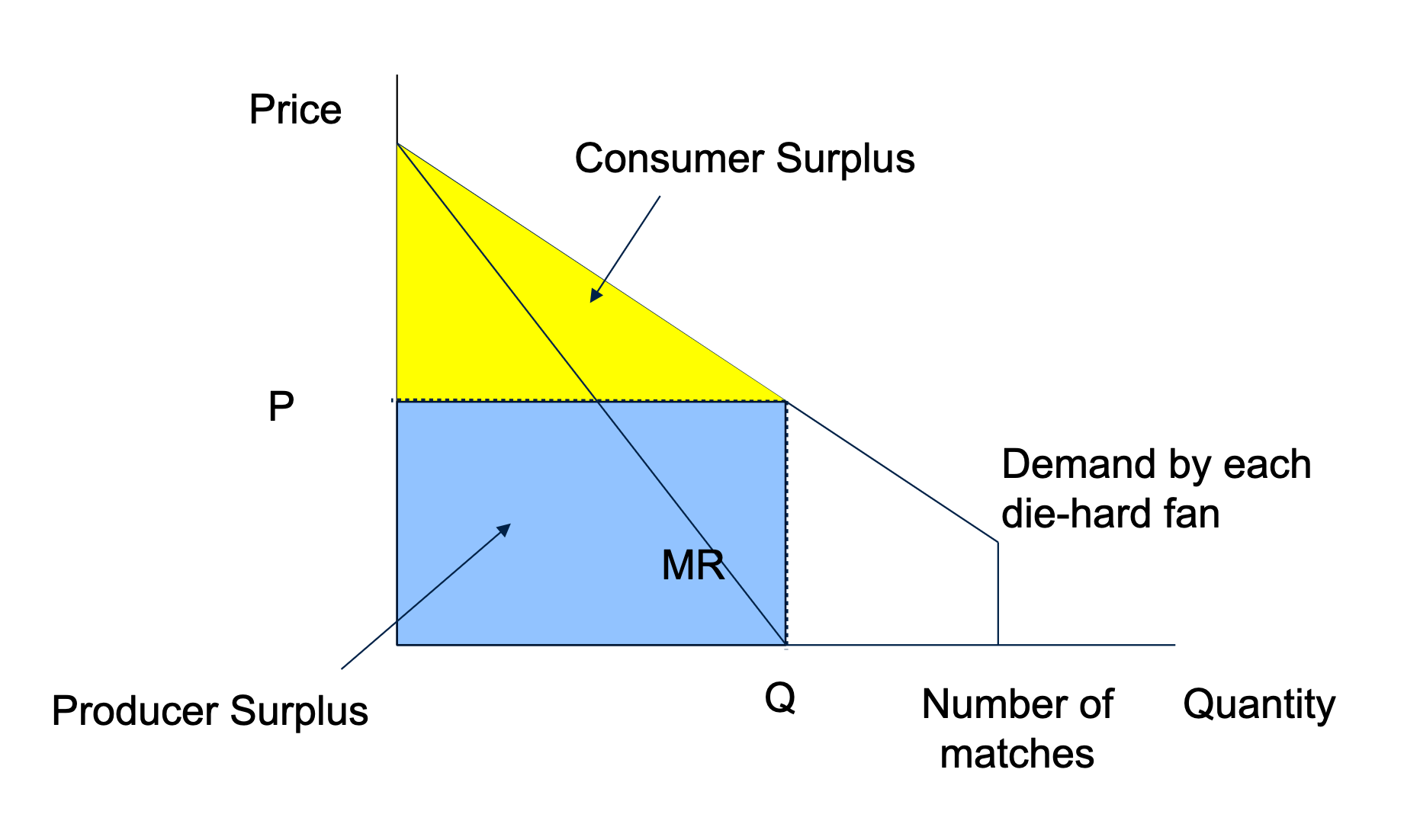
Die hard fans: set single fee, F, to sell ALL matches?
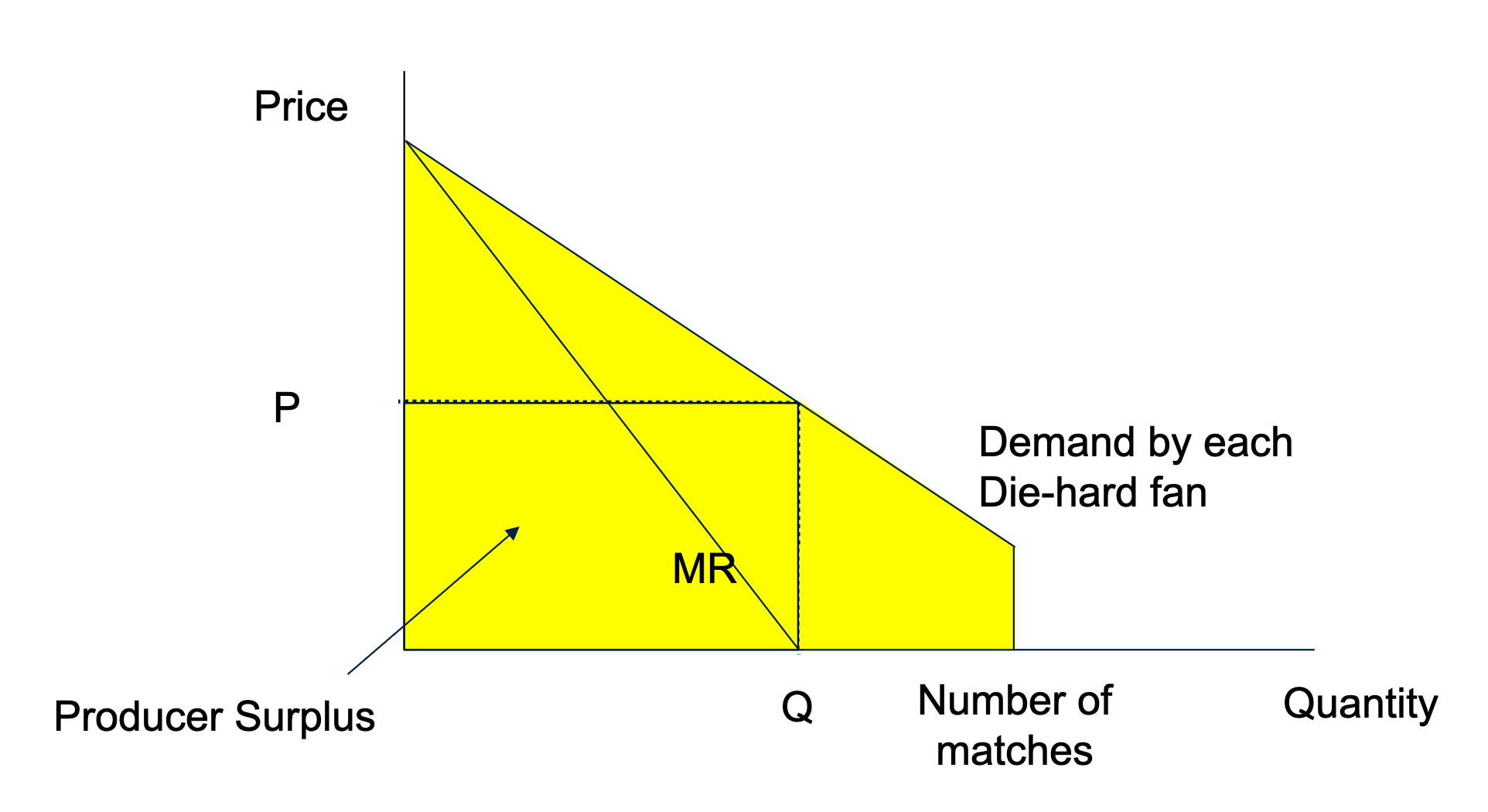
Ticket Prices Information
- Coventry City offer season tickets which allow die-hard fans to attend all 23 home matches in a season
- But what about fair-weather fans?
- Also offer price per match?
- Season ticket is approx £506, for 23 matches – average of £22 per match
- What price can be charged per match?
- Not less than £22
- But what about more than £22?
Die hard fans: what if price were £22?
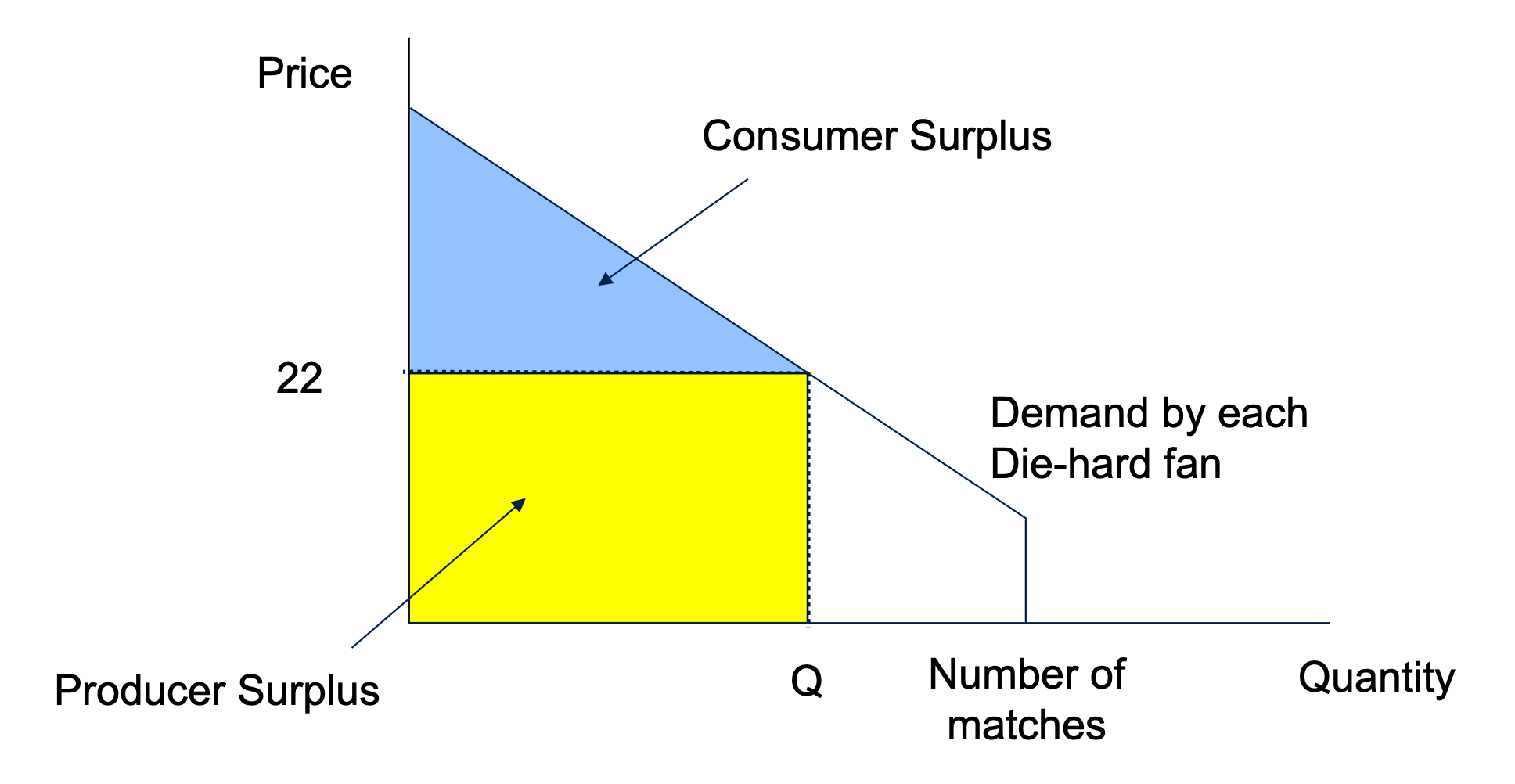
Self-selection constraint for die-hard fans
All consumers aim to maximise consumer surplus. So, to sell season tickets to die-hard fans: consumer surplus with season ticket must exceed (or be at least as high as) consumer surplus without season ticket.
Die hard fans if match-day price is £22: offer season ticket at fee just smaller than yellow + green area
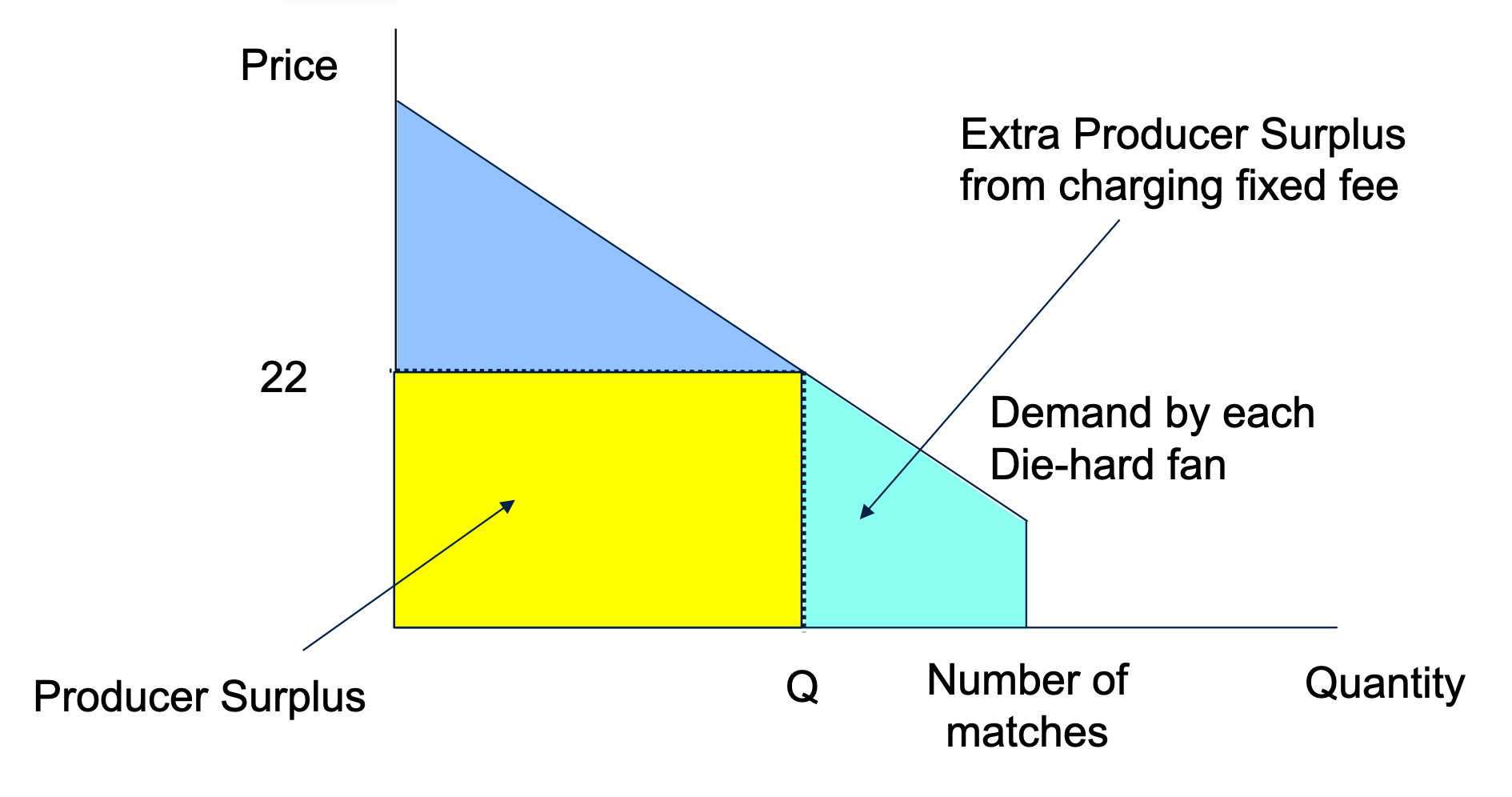
Self-selection constraint for fair-weather fans
To sell per-match tickets to fair-weather fans: consumer surplus must be positive, and greater than consumer surplus with season ticket
Might be worth NOT selling per-match tickets at all – depends on profit that could be earned from fair-weather fans, relative to profit given up from die-hard fans.
Ticket Pricing with Self-selection Constraints
Increasing the match-day price per ticket:
- increases the price that can be charged for the season ticket from die-hard fans
- increases surplus from fair-weather fans, for a given demand
- but reduces demand from fair-weather fans
Ultimately, this all adds up to the effect on marginal revenue, MR
- with MC=0, increase price up to point at which MR=0!
Two-part Tariff
A two-part tariff is a pricing strategy where customers are charged two distinct components: a fixed entry fee and a variable usage fee. This pricing method is commonly used by firms with market power to maximize their profits and capture consumer surplus.
Structure
- Fixed Component (Entry Fee):
The entry fee is a one-time or recurring fixed payment that grants access to the product or service. This could be in the form of:
- Membership fees
- Access charges
- Initial setup costs
- Enrollment fees
- Variable Component (Usage Fee): The usage fee is charged per unit of consumption, typically set at or near the marginal cost of production
Example
This is an example of a two-part tariff: Fixed fee (F) plus price per unit (p): choose combination of F and p to maximise TOTAL profit.
In the general case, offer two pricing options:
Option High Fixed price = FH, price per unit = pH Option Low Fixed price = FL, price per unit = pL
In the Coventry example, set p_H=0 and F_L=0.
Monopoly vs Two-part Tarrif
